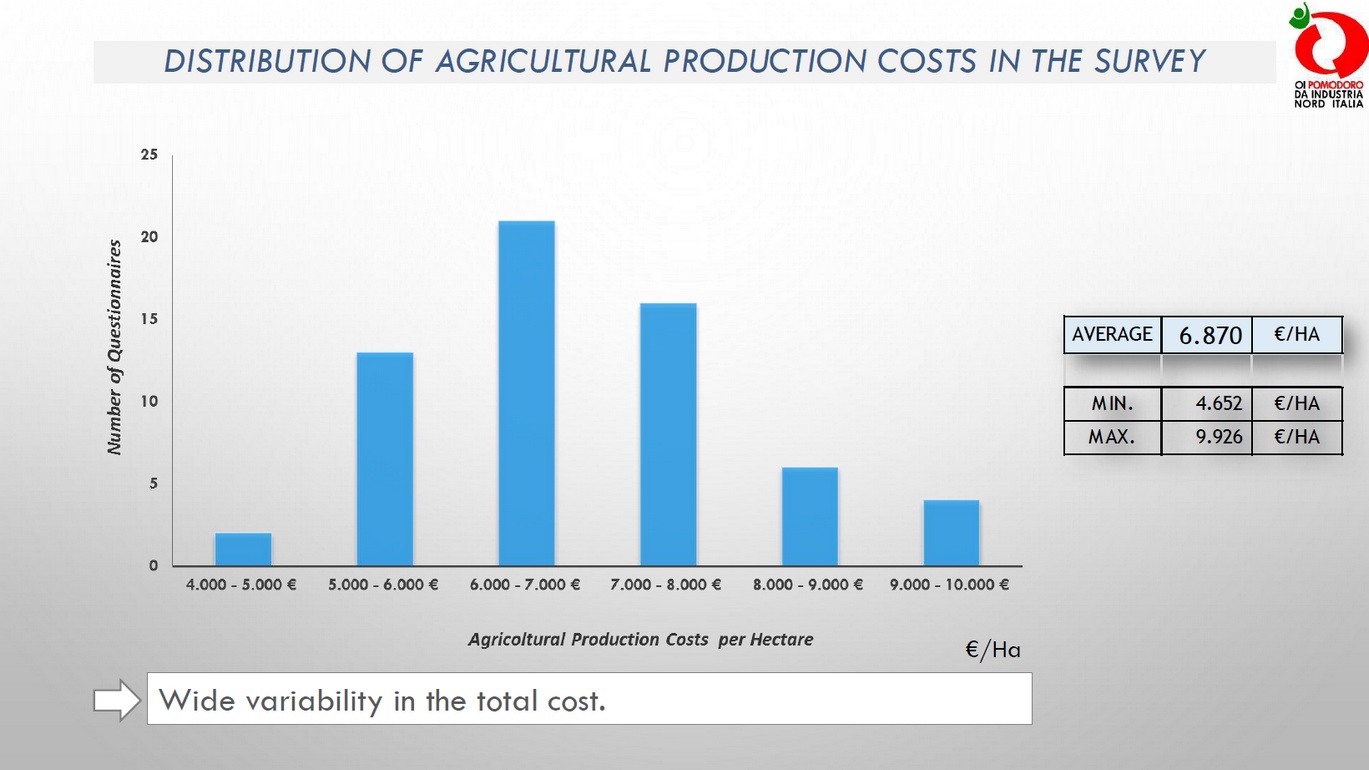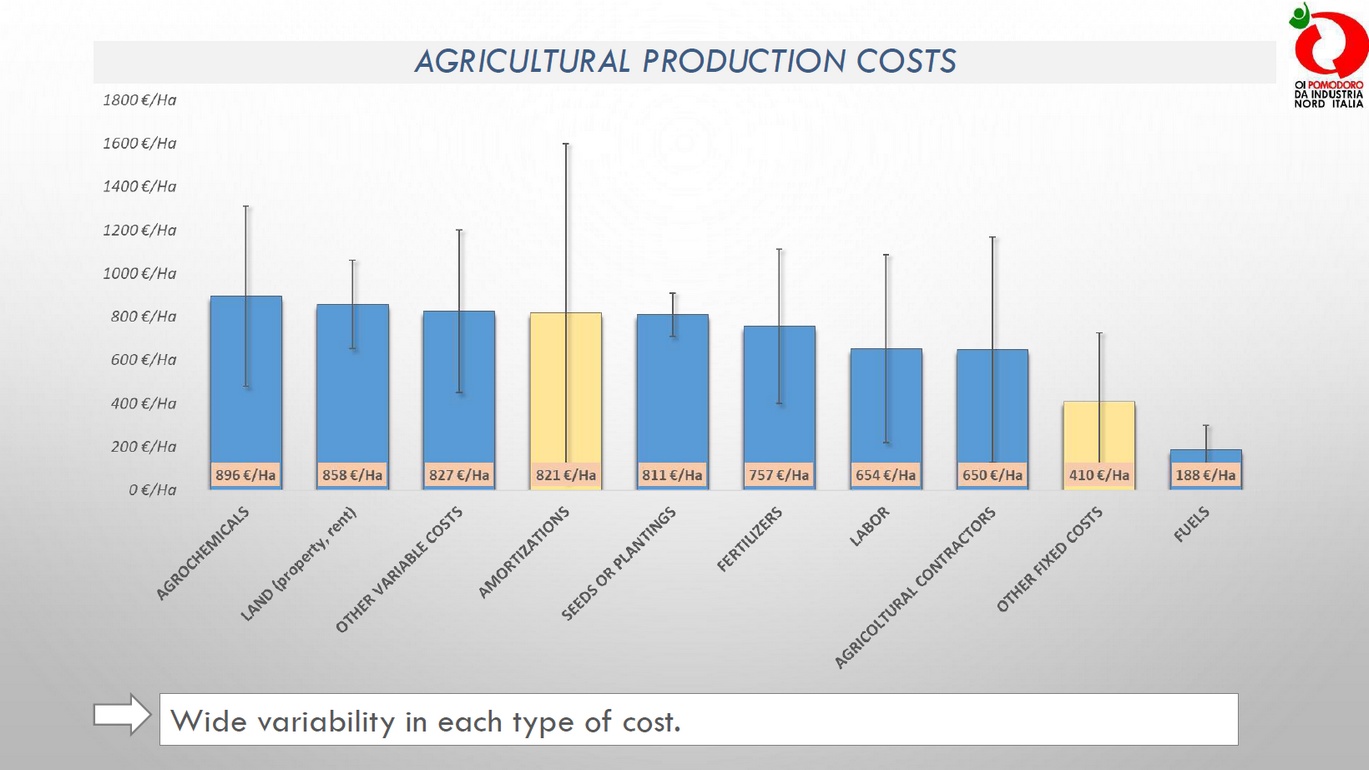First results from a survey on agricultural production costs
From the conference “First Results Of Northern Italy Interbranch Organization’s Survey on Agricultural Production Costs” presented by Maria Chiara Cavallo, General Secretary of the OI Pomodoro da Industria Nord Italia.
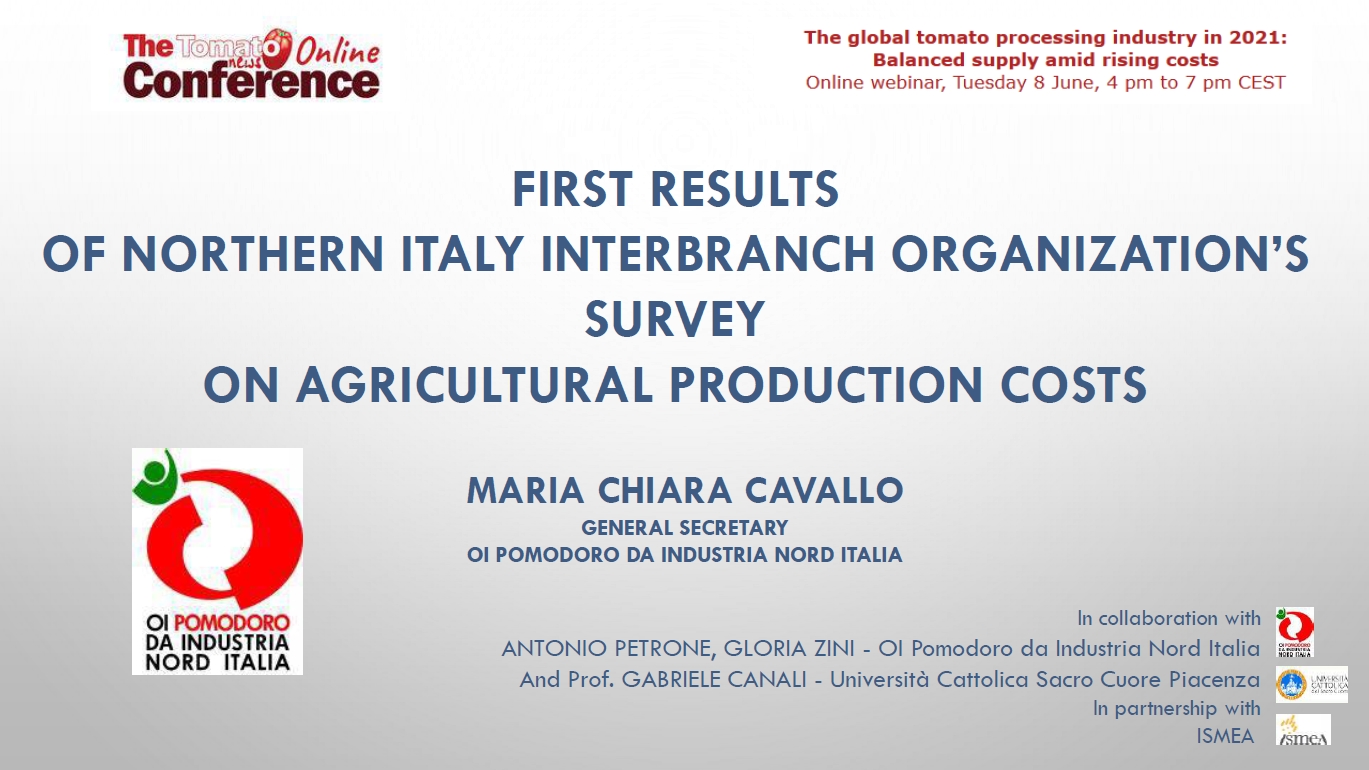
“I would like to share with you the first results of a survey of agricultural production costs, led by the Interbranch Organization staff – Antonio Petrone and Gloria Zini and with the supervision of Gabriele Canali, Professor of the University of Piacenza, who has been the scientific consultant of the Interbranch Organization since its creation. This survey was carried out in partnership with Ismea, a public institute of the Ministry of Agriculture and the operational branch in charge of deciding the price value of agricultural products for drawing up directives regarding unfair trading practices. So the Interbranch Organization aims to collaborate in researching and finding the correct real values for pricing processing tomatoes.
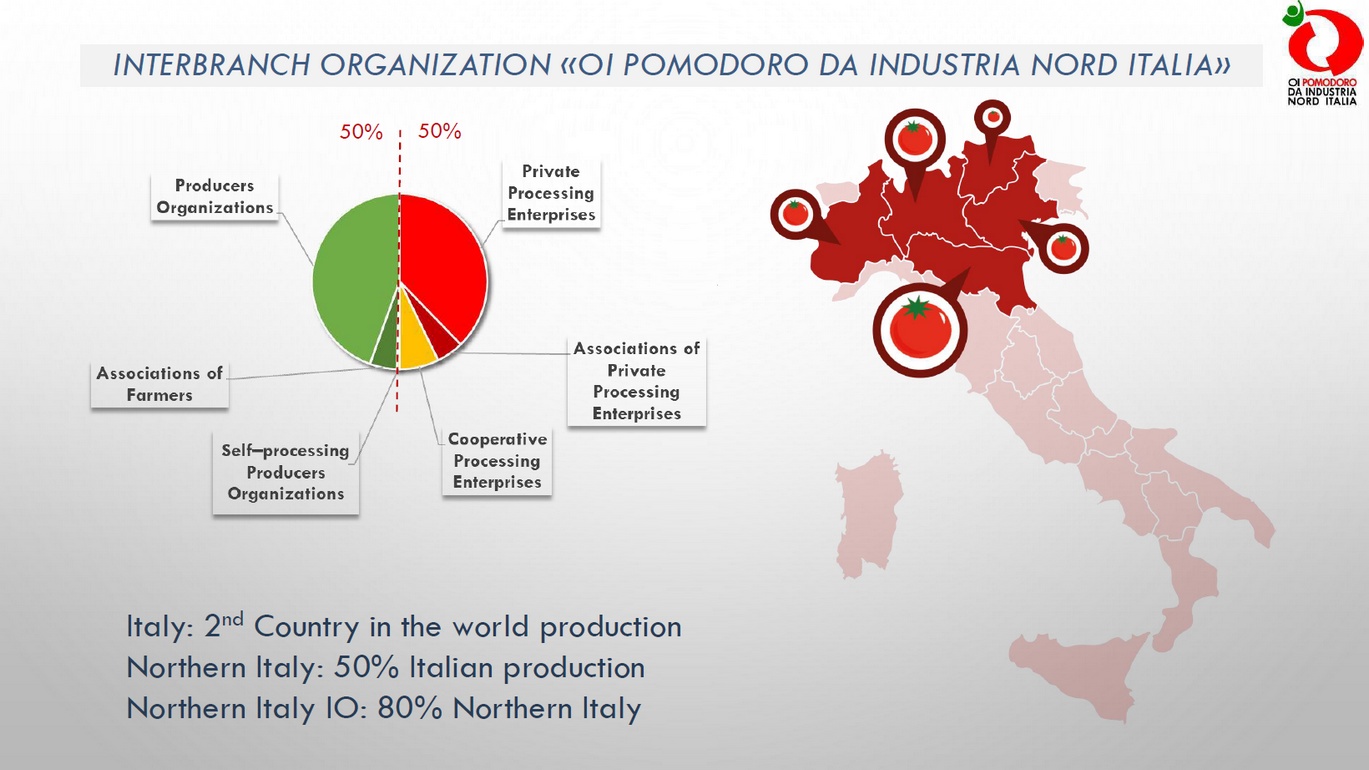
I want to say a few words about northern Italy’s Interbranch Organization. It was created starting in 2006 and officially recognized in 2011. I should emphasize that the Interbranch Organization is 50% composed of growers and 50% of processors. It is therefore not an organization that is external to the supply chain, but the stakeholders organized themselves into a self-governance body for the chain, with the aim to improve competitiveness and sustainability.
As for tomato production, you are aware that Italy is the second or third biggest player in the industry, worldwide, depending on the production in China. Northern Italy represents 50% of the country’s production, and the Interbranch Organization represents 80% of northern Italy’s production of processing tomato.
In order to introduce an analysis of tomato production costs, I should specify that the survey is related to processing tomato, not to fresh tomato, and is focused on agricultural production costs, not processing costs. The presentation is about the first results of the survey; we want to go further with this research: these slides are an early preview exclusively for the conference of today.
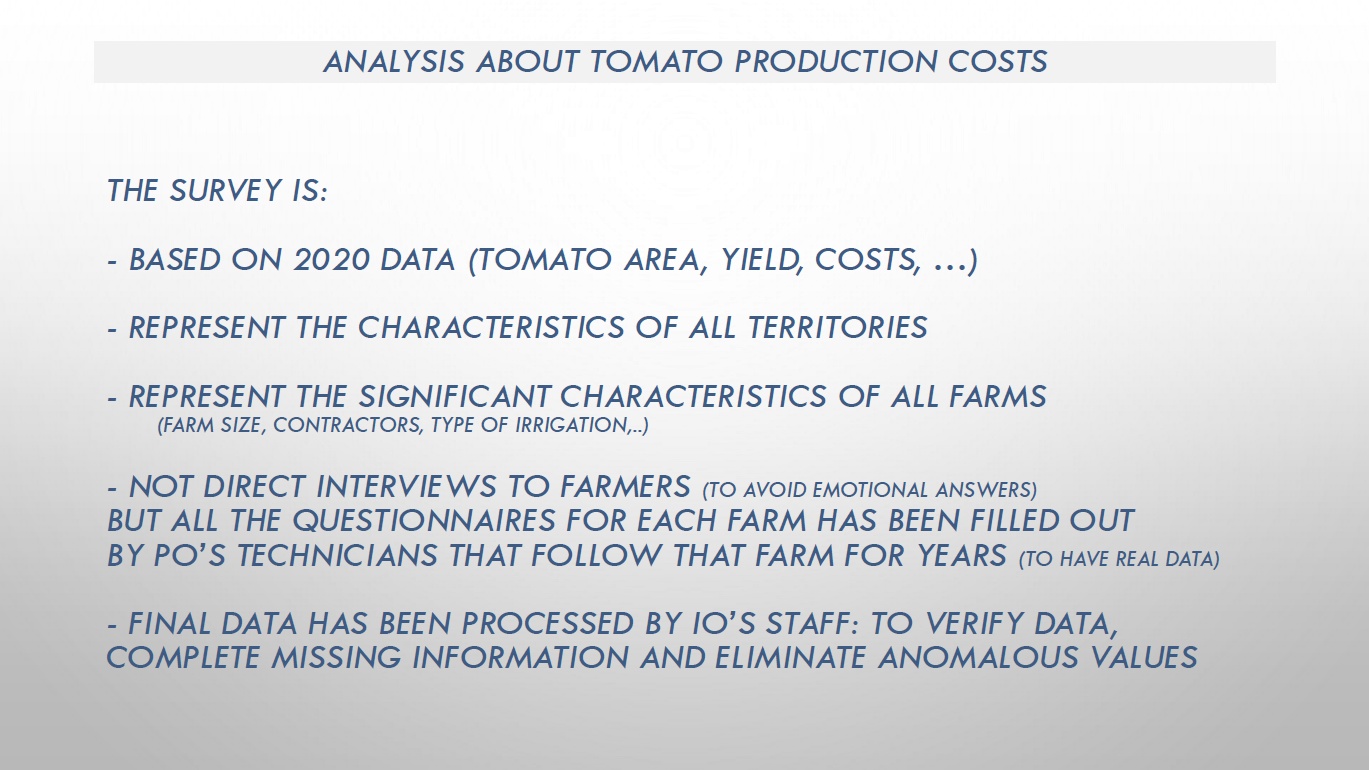
The survey is based on 2020 data (tomato surface area, yields, costs, etc.). It expresses the characteristics of all territories and the significant characteristics of all farms (farm size, use of contractors, computer systems, type of irrigation, etc.). The survey was carried out without directly interviewing farmers (to avoid emotional answers) but all the questionnaires for each farm were filled out by PO technicians who follow individual farms for years on a daily basis, providing real data.
And lastly, final data has been processed by the Interbranch Organization’s staff to verify data, complete missing information and eliminate anomalous values.
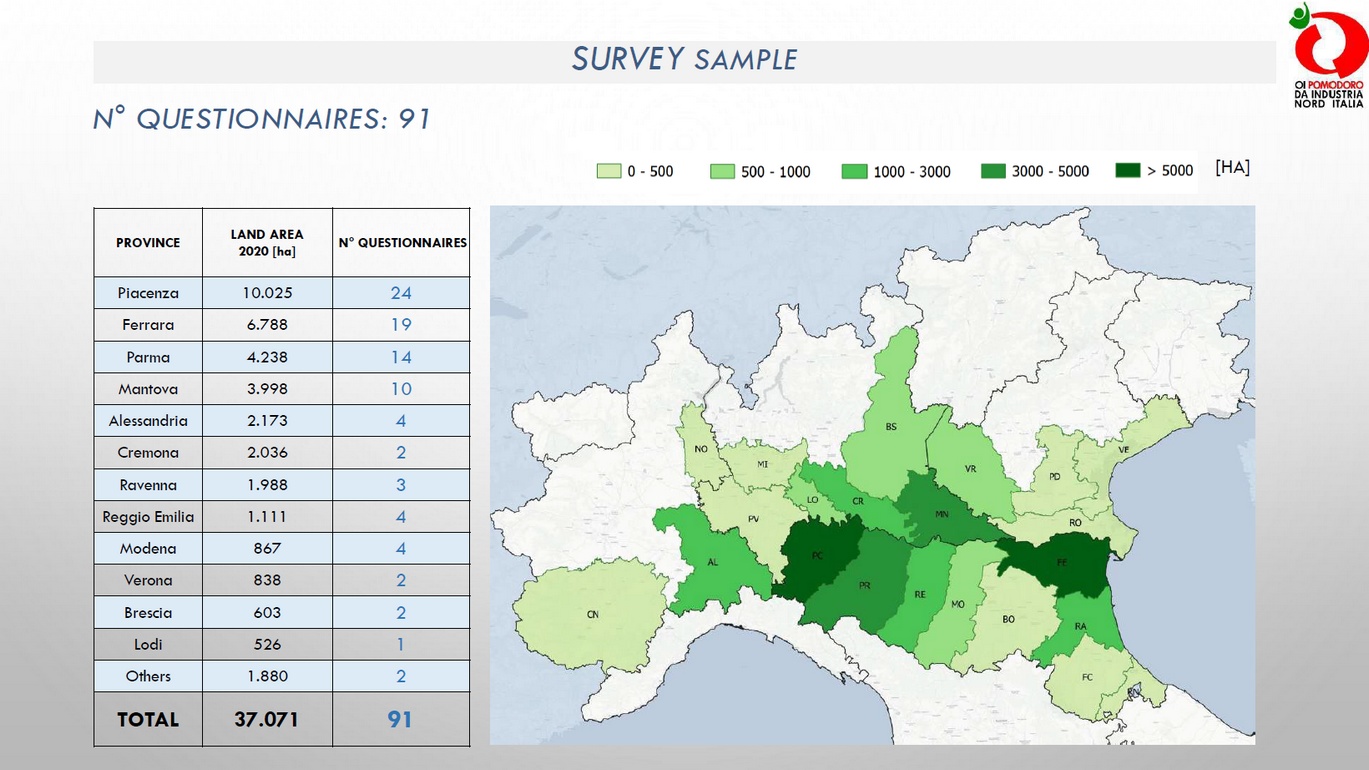
This slide presents a survey sample. We collected 91 questionnaires, distributed for relevance according to the tomato hectares in each territory. The slide shows areas with dark tones of green, which represent territories with more tomato surfaces. The table shows the number of questionnaires collected from each territory proportionally to the tomato hectares cultivated in each of them.
This graph shows the distribution of the questionnaires based on cost. We divided cost into clusters, within a range of 1,000 Euros per hectare, starting from 4,000 Euros/ha and going to 10,000 Euros/ha. The graph follows a normal distribution, and the cluster with the highest number of questionnaires is the 6,000 to 7,000 Euros/ha cluster. The average value is 6,870 Euros/ha, with a minimum of 4,652 Euros/ha and a maximum of 9,926 Euros/ha. This is an indication is the wide variability in total costs.
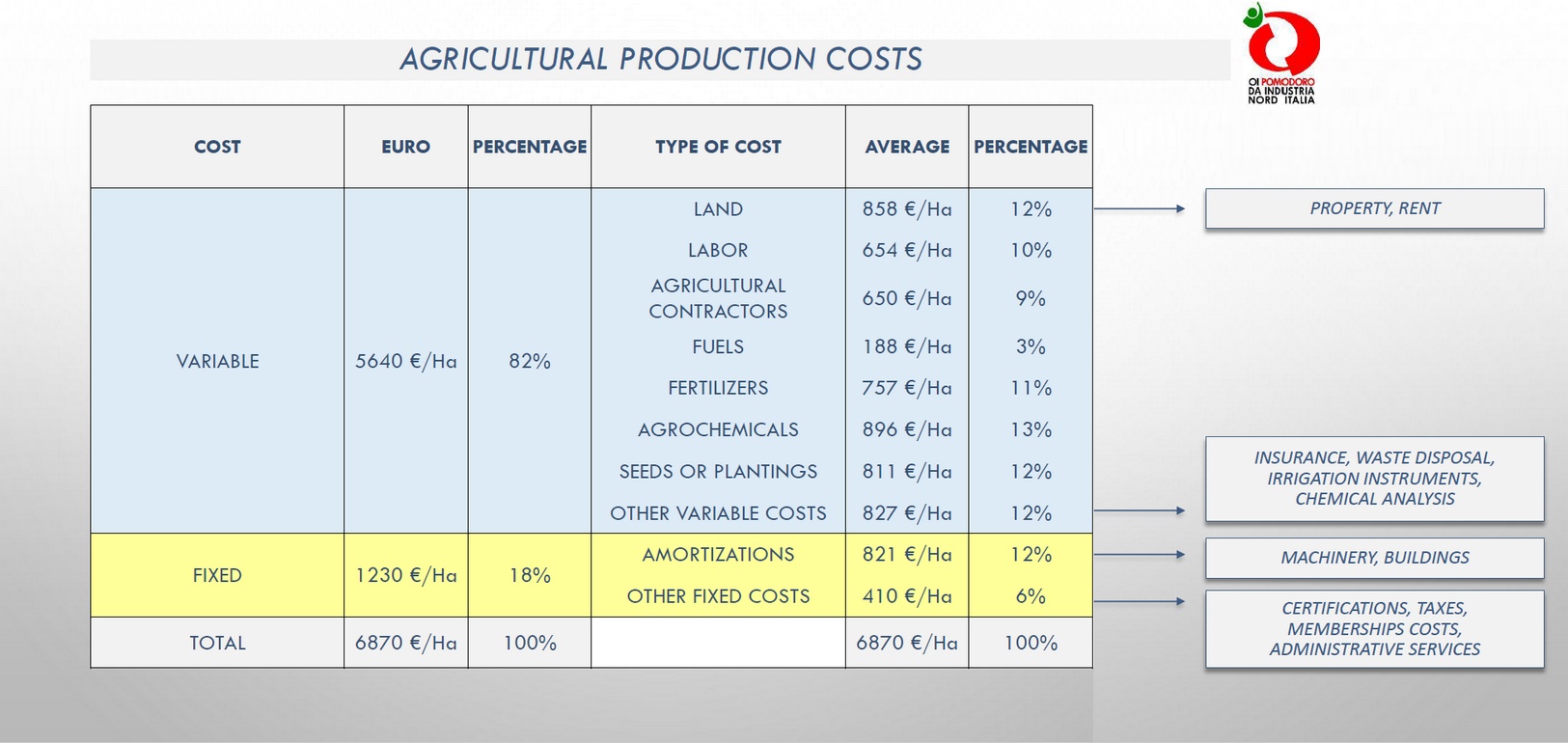
In a detailed breakdown of production costs, the total cost is divided between variable costs and fixed ones. The variable cost value is composed of land (owned or rented), labor (salaries, etc.), agricultural contractors (specialized teams, composed by human resources ad machinery, employing in several agricultural operations (planting, harvesting..., contracted for the season), fuel, fertilizer, agrochemicals, seeds or seedlings, and other variable costs like insurance, waste disposal, irrigation instruments, chemical and environmental analysis, etc. Fixed costs are amortization of machinery or buildings, and other fixed costs like certifications, taxes, membership costs, administrative services.
Total cost is composed of 82% variable costs and 18% fixed cost. It is important to remember that these are average values. For each type of cost, values are shown in the table. In the pie chart, that percentage is shown in yellow for fixed costs and in blue for variable costs.
[…]
This underlines that each farm is organized differently, and that total cost varies according to all these factors.
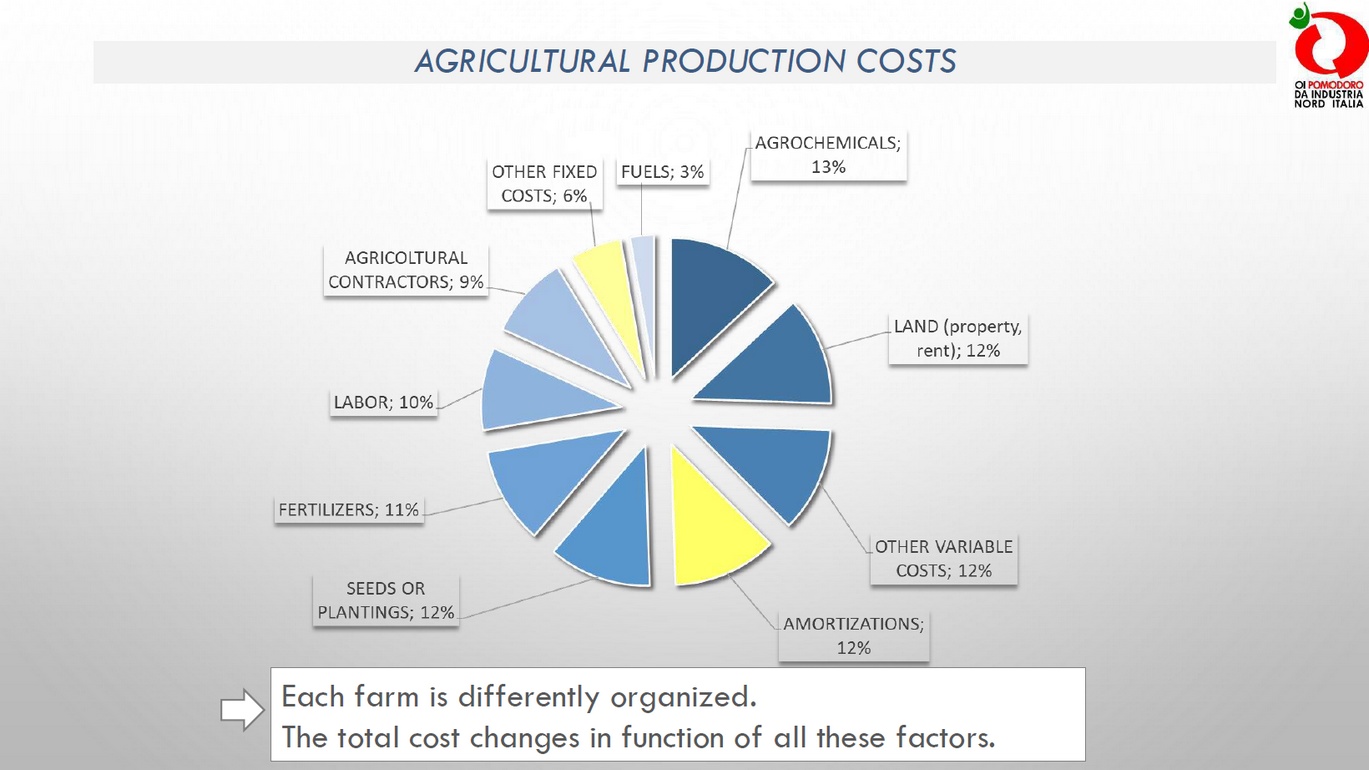
This graph indicates the value cost in Euro per hectare. The black bars (vertical, Ed.) represent the standard deviation for each value. This indicates that there is a wide variability in each type of cost.
As for the relation between total cost per hectare and yield, based on the questionnaires regarding yield, it is clear that there is a normal distribution with a higher value between 70 and 90 metric tonnes per hectare. This confirms the validity of the survey, because Northern Italy’s historical average yield is 71.3 tonnes per hectare, and in 2020 it was 74.2 tonnes per hectare – slightly higher than average. The survey shows the same final results, which therefore correspond to reality. The relation between total cost and yield is directly proportional, as the black line indicates. The blue line shows that as the yield increases, total cost goes up. The challenge for farmers is to find the balance between cost and revenue.
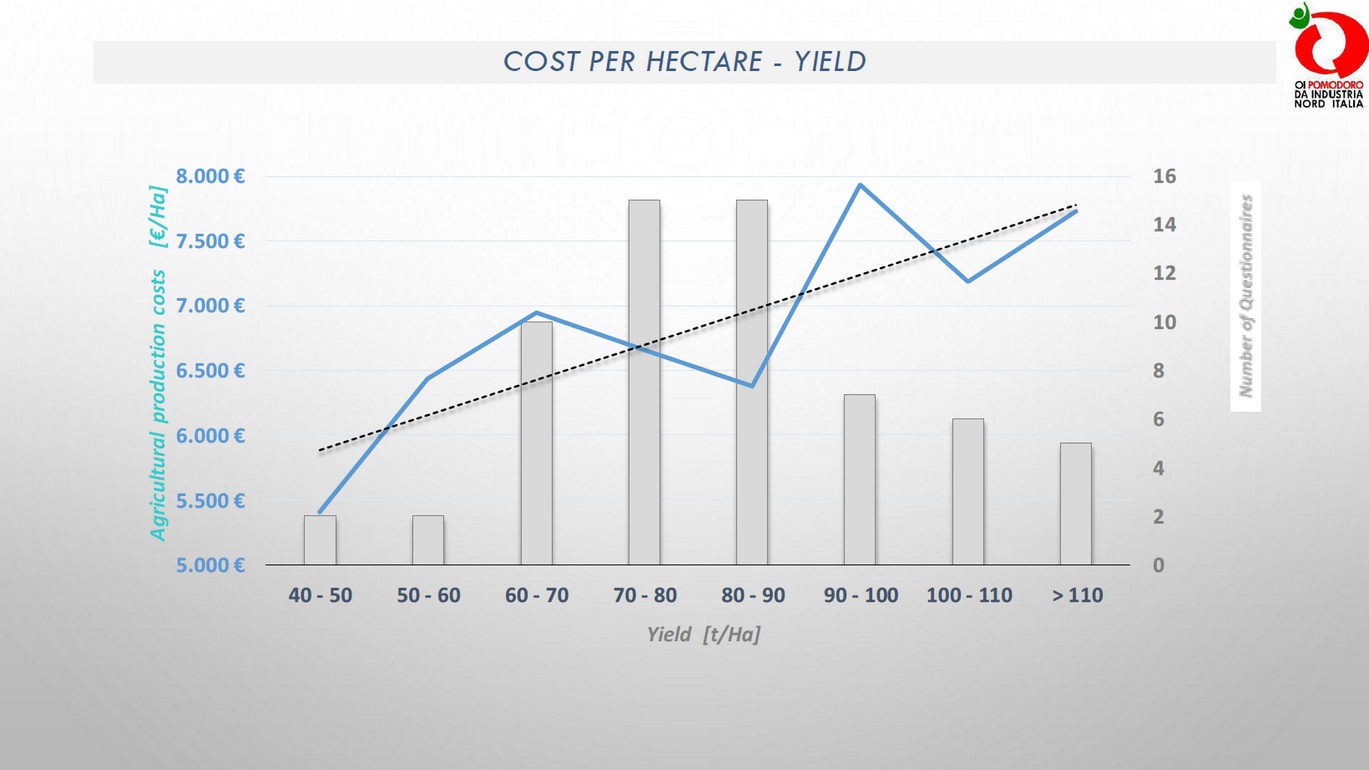
Regarding the relation between cost per hectare and farm size, as a parameter for farm size, we used the area of the farm planted with tomatoes. The graph shows the farm’s size according to tomato crop surface. […] The highest cost value in the survey is for farms with 0 to 20 hectares of tomato, and it decreases for farms with larger surfaces planted with tomatoes.
So, the relation between cost per hectare and farm size is inversely proportional, as shown by the black line. The blue line shows that as the farm’s size increases, total cost per hectare decreases. When a farm specializes in growing tomatoes, the cost per hectare goes down.
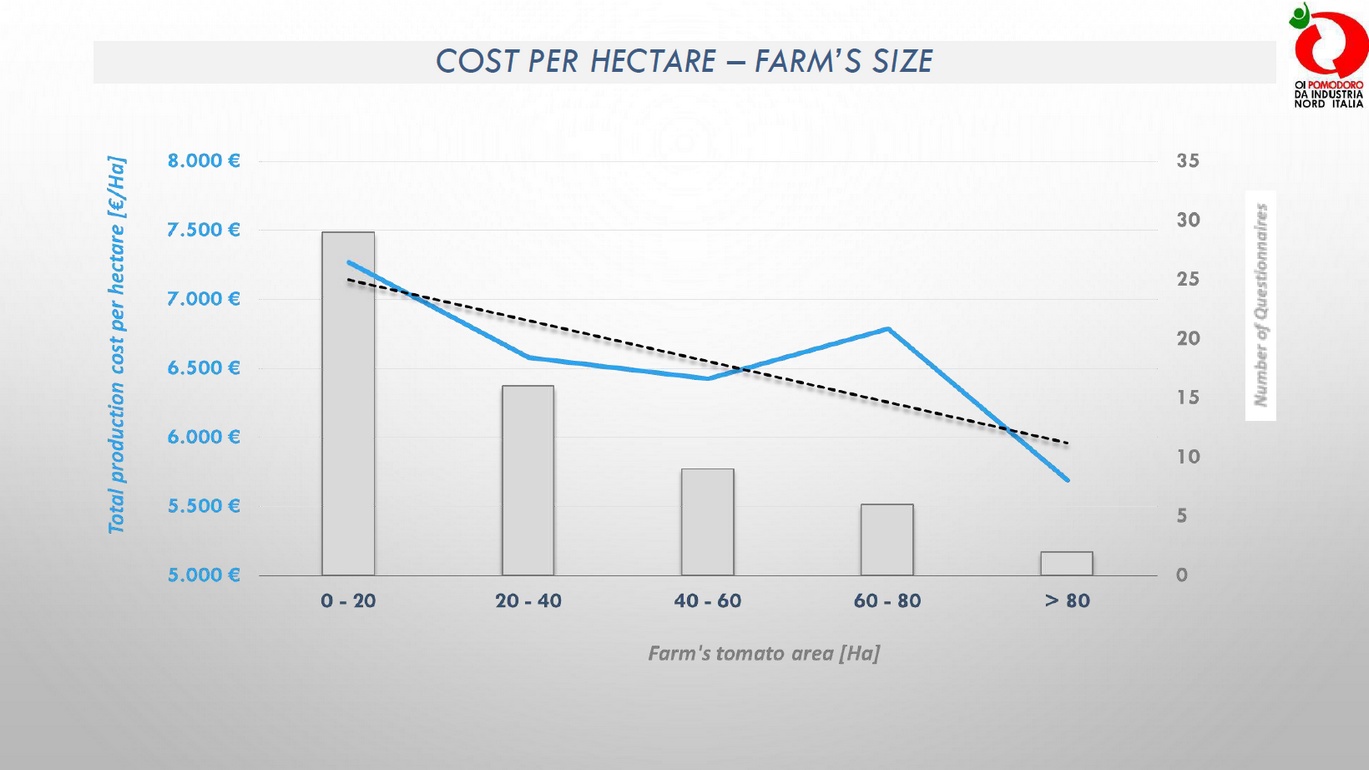
So the survey demonstrates that tomato production cost is not characterized by one single factor. Cost varies depending to a wide range of factors. Total agricultural production cost varies according to many parameters, and each of these also varies according to a range of cost factors.
The last slide introduces the general topic of today – the rising cost of inputs. In an interview about the trend of prices for agricultural inputs, the northern Italy agrarian consortium said that fertilizer prices this year recorded a 10-15% increase compared to last year (+20% for nitrogen, +10% for phosphorus, no change for potassium). Prices for agrochemicals recorded a 4-8% increase in 2021 compared to last year, especially for copper. Fuel prices recorded a 12-15% increase for agricultural diesel compared to last year.
In summary, due to rising input costs, it is likely that 2021 agricultural production costs will be higher than in 2020.
Source: TomatoNews Online Conference (June 8, 2021)
All presentations and videos will be made available here from 1st August 2021.
All the slides are available here:






